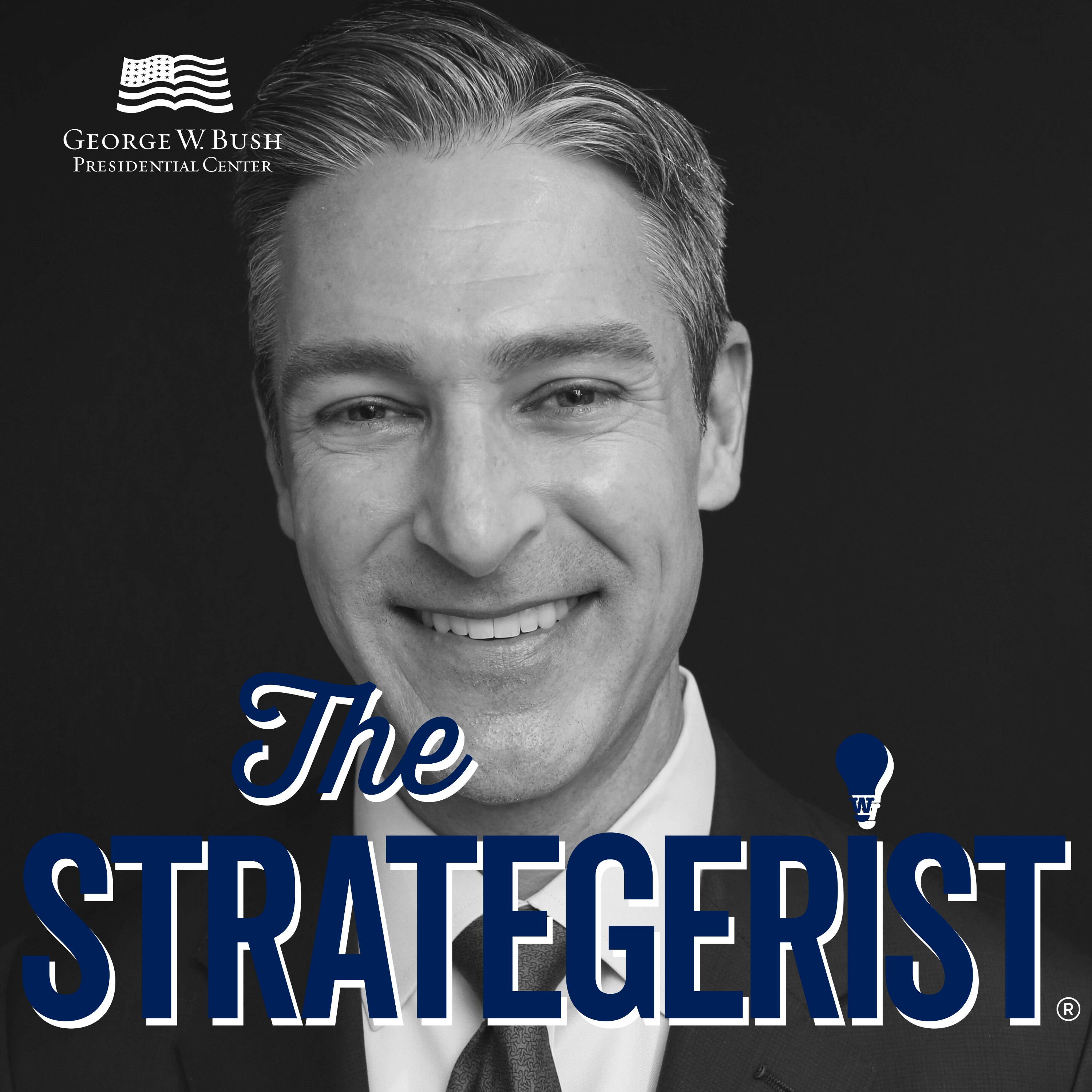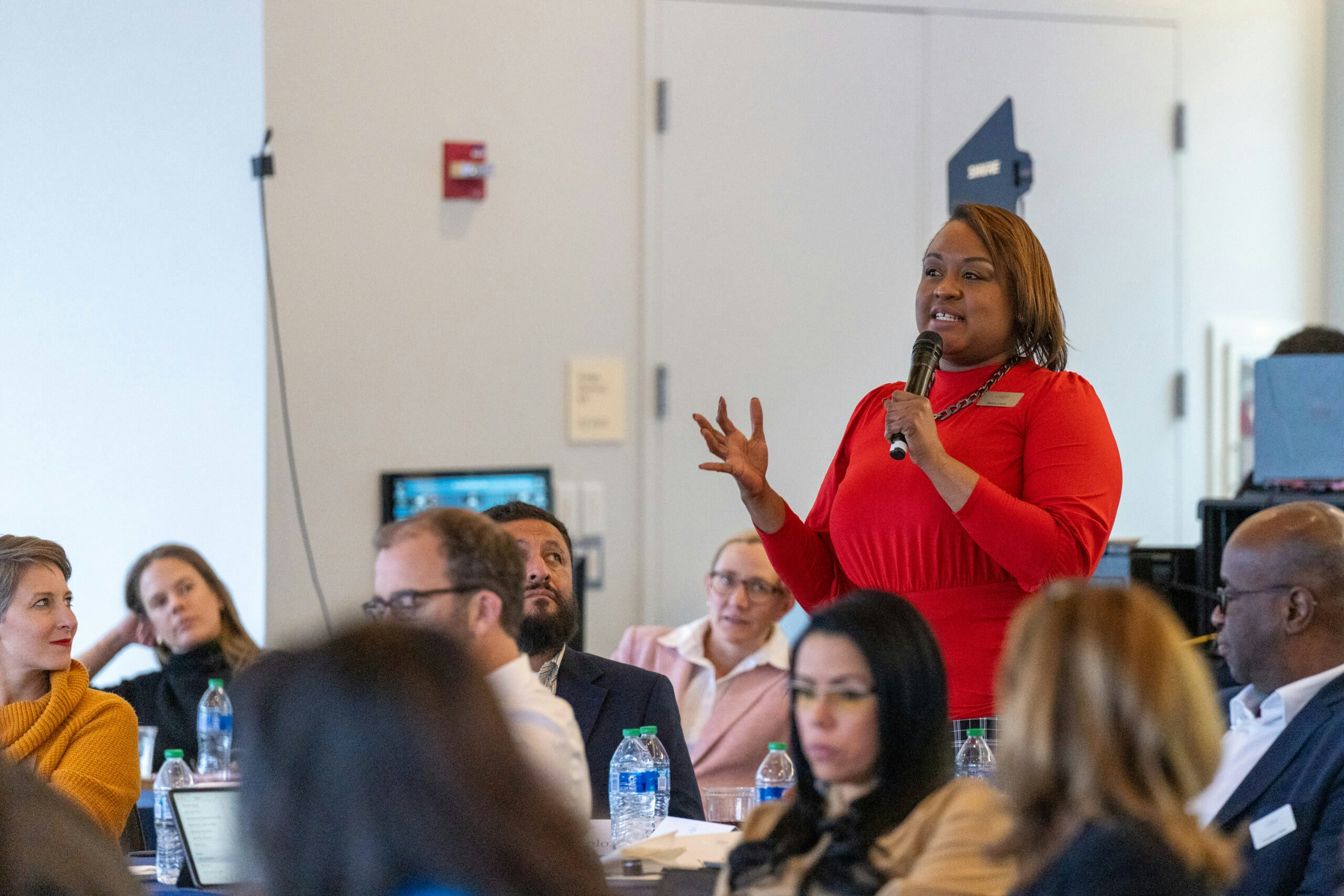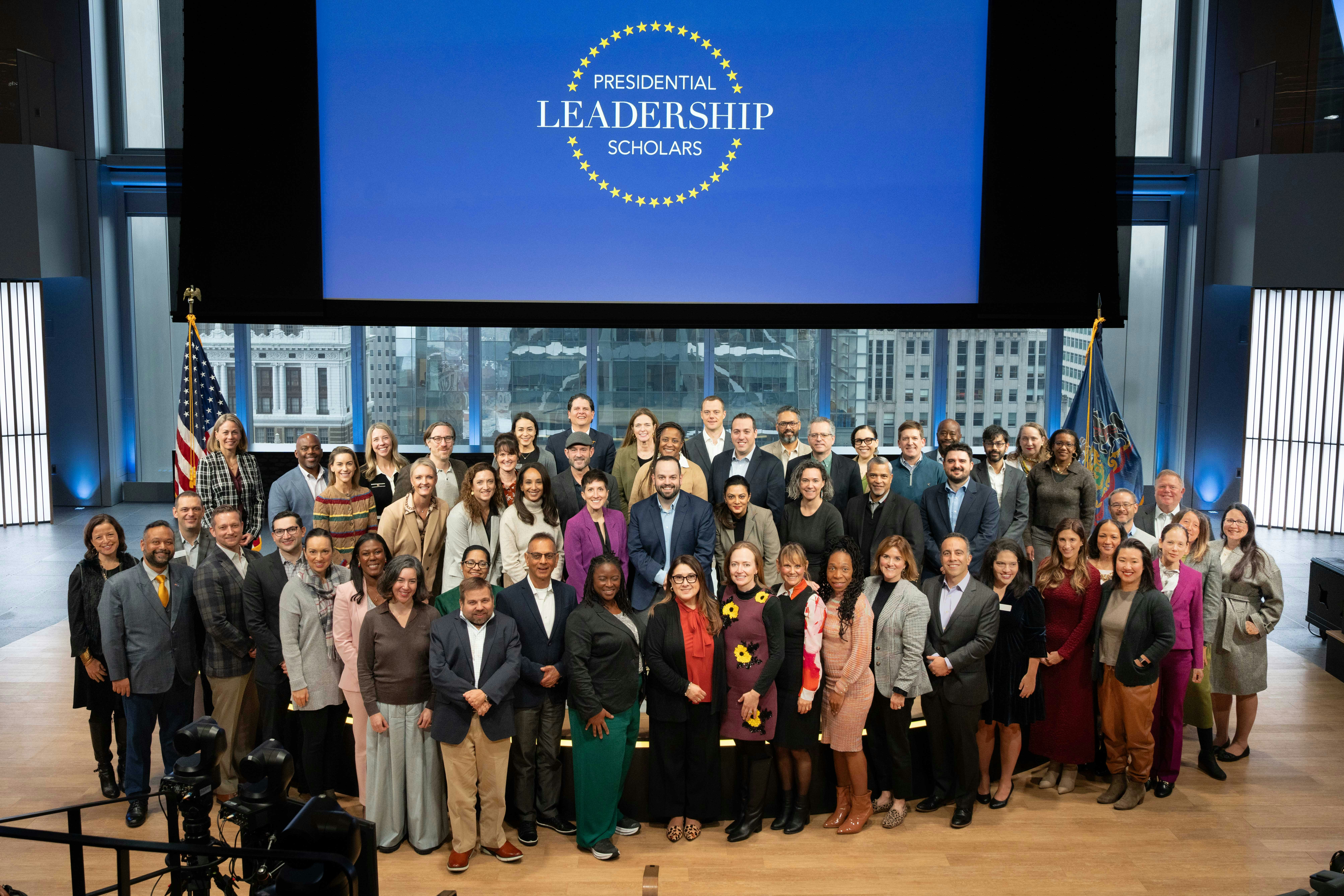Not long after George Floyd’s murder in 2020, the New York Times faced a revolt of sorts.
The newspaper’s opinion pages published a column from Republican Senator Tom Cotton of Arkansas, who argued authorities should send in troops to protect individuals and businesses from rioters. The Times had also run pieces representing the opposite point of view, and Cotton’s essay went through the opinion section’s normal editing processes. But pushback began from employees in the newsroom and elsewhere within the organization as James Bennet, who was The Times’ editorial page editor at the time, explained last December in a revealing essay in The Economist.
The response was fierce. Journalists in the newsroom, whose job is to report the news, jumped over the figurative wall that traditionally separates beat reporters from opinion writers in the editorial department, where their jobs are to comment on news and events.
This “wall” may seem artificial to readers, but gathering news and commenting on it are different functions. Traditionally, the job of newsroom journalists is to be as objective as possible in searching for truth or reality in a situation. Opinion writers apply the values of their newspaper or their own convictions to help readers interpret an event or policy.
Those within The Times newsroom who protested the decision to publish Cotton’s column objected for several reasons, according to Bennet. Some, for example, feared the piece might persuade readers to support the senator’s position and prompt authorities to send in troops. While some Black reporters said the column would endanger them and affect the paper’s sourcing in the Black community, the objectors as a whole reflected an intolerance within The Times for the essence of pluralism.
Our nation’s commitment to pluralism provides space to express one’s views and practice one’s beliefs without fear of reprisal – even when they conflict with others. The practice of pluralism particularly matters to the health of a news organization so it avoids the creation of a singular culture and groupthink.
Long before this furor, which ultimately led to Bennet’s resignation, The Times had been charged with letting a liberal bias slant its news coverage – especially by some on the political right and away from the two coasts. When Bennet’s essay appeared in The Economist, where he now works, the British newspaper also published a study that showed domestic coverage by The Times (along with The Washington Post and CNN) had moved left from 2017 to 2022 in 25 of 29 topics surveyed. Bennet, a self-described political liberal, went further and lamented that The Times had moved from being liberal to illiberal. He summed things up this way:
“The Times’ problem has metastasized from liberal bias to illiberal bias, from an inclination to favor one side of the national debate to an impulse to shut debate down altogether.”
Some of Bennet’s colleagues at The Times, like former opinion staffer Adam Rubenstein and The Free Press founder Bari Weiss, who previously worked on The Times’ opinion staff, shared similar accounts of this illiberal culture in the newsroom.
In her public resignation letter, Weiss lamented that, “once-great journalistic institutions betray their standards and lose sight of their principles” while also stating her belief that “Americans still hunger for news that is accurate, opinions that are vital, and debate that is sincere.”
The issues that roiled the Times are not unique to that media organization. Some Los Angeles Times reporters signed a petition that criticized media coverage of the Israel-Hamas conflict following Hamas’ October 7 attacks. And they suggested how Israel should be characterized in that coverage, thus taking a position on an ongoing story.
Editor-in-Chief Kevin Merida, who resigned his position earlier this year, prohibited those reporters who signed the petition from being part of the newspapers’ coverage of the conflict for 90 days. After that time, the paper would revisit its decision. Some journalists objected, as did the newspaper’s owner. Merida reminded the staff that: “[A] fair-minded reader of the Times news coverage should not be able to discern the private opinions of those who contributed to that coverage, or to infer that the organization is promoting any agenda.”
There’s also the case of National Public Radio’s (NPR) Uri Berliner’s missive in The Free Press, in which the veteran public media editor slammed his news organization for what he termed a shift in its culture toward a more activist, liberal point of view. While others within the organization vigorously disagreed with Berliner’s appraisal, he wrote this of the newsroom where he worked for 25 years:
“It’s true NPR has always had a liberal bent, but during most of my tenure here, an open-minded, curious culture prevailed. We were nerdy, but not knee-jerk, activist, or scolding.
“In recent years, however, that has changed. Today, those who listen to NPR or read its coverage online find something different: the distilled worldview of a very small segment of the U.S. population.”
Berliner, who since has resigned his position, went on to describe the growth of affinity groups within NPR who share a common identity. On one level, such groups can help journalists of a like mind get to know each other, Berliner wrote. But they have a voice in meetings that determined “the terms and vocabulary of our news coverage,” he explained.
The lack of viewpoint diversity within the news organization, led to “an unspoken consensus about the stories we should pursue and how they should be framed,” he claimed. As one example, he cited how stories about the Israel/Hamas war “highlight[ed] the suffering of Palestinians at almost every turn while downplaying the atrocities of Oct. 7, overlooking how Hamas intentionally puts Palestinian civilians in peril and giving little weight to the explosion of antisemitic hate around the world.”
Of course, charges of journalists letting their political views shape their coverage of news and events have been front-and-center in criticisms of Fox News. The television network notably agreed in 2023 to pay Dominion Voting Systems $787 million to settle a lawsuit in which the company claimed damage to its reputation after Fox falsely reported the company’s voting machines had switched votes in 2020 from President Donald Trump to then-Democratic presidential contender Joe Biden.
The relationship between some of the network’s stars and Trump, especially during the dark moments of Jan. 6, 2021, ramped up criticism of favoritism. Some of them sent text messages to White House Chief of Staff Mark Meadows as the insurrection unfolded, privately advising the president on what to say or do, while suggesting something different on air to millions of viewers. The wall between reporting and opinion was distorted.
So, both liberal-leaning and right-leaning news organizations are facing questions about bias, groupthink, or pushing a particular narrative. They each can suffer from a lack of pluralism in their newsrooms. Pluralism provides space for opposing views to question prevailing narratives or poke holes in decisions before they’re taken. Pluralism in newsrooms particularly helps develop the reverence for evidence that former Washington Post editor Martin Baron terms essential for quality journalism.
Diversify newsrooms to avoid groupthink
These lessons exemplify the dangers of news organizations – or any organization, for that matter – adopting a singular culture. They can become prone to groupthink, where conformity around a set of beliefs causes people to mirror each other’s views. At worst, groupthink can lead to a misperception about what someone outside an organization actually believes.
A lack of understanding of others is especially dangerous within print, television, and radio organizations – the three pillars of traditional media. We live in a time of troubling decline of faith in those pillars. Gallup reported last fall that the lack of trust in journalism organizations ties the lowest record of faith in journalism since the organization started polling for such in the United States in 1973.
The decline is particularly worrisome for our democracy. Resolving public problems, including taking the poison out of our politics, starts with operating from a shared set of facts. Understanding the truth of a situation becomes more elusive when people show little to no belief in the accuracy of the news they are reading, hearing, or viewing. As a result, our common challenges go unresolved.
That’s why it’s so important that newsrooms diversify by hiring reporters, editors, and executives with a range of experiences, values, and backgrounds.
Journalists may misconstrue the reality of a situation if they are not receiving input and information from a cross-section of people, sources, and beliefs. Likewise, they are at risk of losing the trust of their audiences if their viewers, readers, or listeners feel news organizations do not understand them or their communities.
These dangers are particularly acute in local news operations. Surveys from organizations like the Pew Research Center and the Center for Media Engagement at the University of Texas at Austin show that Americans favor local news operations or consider them more trustworthy than national media organizations. Yet even local newsrooms can lose that trust if they don’t adequately reflect their cities and towns.
“People want to see their communities and perspectives reflected in their local news,” the Center for Media Engagement found in a 2023 report.
Breaking out of a newsroom monoculture takes effort. The work starts with organizations hiring those who are trained in the essentials of journalism. They know how to listen to others, question their own biases, and show curiosity about a community and the world at large.
Hiring for diverse experiences, values, and backgrounds can translate into different things for different organizations. For the major national media organizations headquartered in New York or Washington, this could mean searching diligently for talent beyond the East Coast and the Ivy League. For conservative-leaning media organizations, it could result in hiring more people who are not a product of the conservative ecosystem of small colleges, student groups, and rightward magazines across the country.
For local news organizations, after looking for journalists who know how to write and report, this could mean hiring reporters who understand a community’s views. At the same time, diversification could lead to hiring journalists who can help communities consider situations from a different angle or learn what is happening in other parts of the country on issues like reducing homelessness, growing tax bases, or managing concerns over immigration.
A staff with wide-ranging backgrounds and experiences certainly helps editors in charge of assignments perform their jobs better. They need to know how liberals, conservatives, and moderates alike genuinely think about issues. Or how people of faith or of no faith respond to a matter. Or how Americans who hail from rural communities or from inner cities see the world.
This approach can help news organizations better cover their towns and cities. The Center for Media Engagement, for example, worked with Trusting News and 27 local newsrooms to explore how news organizations can bridge the divide between the media and conservative audiences.
A key finding was that multiple conservative participants thought journalists used “narrow or extreme stereotypes, which they felt assume conservatives are racist, uneducated, unkind, or only care about money.” One Pennsylvania focus group participant said he felt like journalists reporting on supporters of Donald Trump in the 2016 election “were almost done in this tone of the explorer finding a lost tribe in the woods some place.”
To be certain, journalists, like all humans, have opinions about the news and events of the day, including those they cover. They are neither robots nor stenographers. The issue is how to ensure those opinions do not obstruct accurate reporting, which poll after poll shows Americans most value in the journalism they consume.
Accurate reporting requires editors prompting their reporters to question their own biases and to go the extra mile to include other points of view. There may be no such thing as purely objective reporting, but news reports can be as fair and accurate as possible and provide context for readers, viewers, and listeners by aggressively seeking out other views. And when that diversity of views can’t be represented, reporters would likely earn goodwill from audiences if they explained why.
Striving for fairness and accuracy in reporting is particularly important for journalists with strong convictions. Editors need to remind them that “the statement of the activist they are interviewing is not the end of the line,” as Dallas Morning News Editorial Page Editor Rudolph Bush puts it. Much of this involves training journalists, especially up-and-coming ones, in how to listen to others beyond their own circle.
Diversify editorial departments, too
Of course, the opinion pages of a newspaper or a digital site are supposed to express how the values of the organization apply to contemporary situations. Some editorial departments lean left, some right, some down the middle. Whatever their views, employing opinion writers with a range of perspectives can strengthen their work. Editorialists then can understand how different types of readers in their cities or towns think about a subject. That kind of understanding helps when it comes to writing persuasively about, say, improving a transit system or holding a local leader accountable.
The same goes with hiring opinion columnists, whose job is to express their own views. If the values of a newspaper’s editorial department lean right, the paper will better serve their readership by hiring a columnist or columnists who lean more liberal and offer thoughtful counterpoints. The same is true for the opposite situation. Bringing a diversity of views to a paper’s opinion pages creates a broad public forum for opposing positions to present substantive arguments, which is an essential role for a newspaper’s editorial department.
After all, how can we engage in productive debates over issues of importance to our communities if people can’t accurately articulate their opponent’s views? This, in turn, allows for better quality disagreement where we engage in dialogue on the things we actually believe – not misinformed or bad faith caricatures of them.
The Dallas Morning News’ opinion pages, for example, run topical series that bring together different voices to address local, state, national, and even international problems. Its Living our Faith series regularly publishes essays from contributors with a range of religious views to promote greater religious understanding and respect. Its American Middle set of editorials and columns features local, state, and national writers who offer solutions for the nation’s bout with polarization. Its The Unraveling of Latin America project brings together diverse local, state, national, and international contributors to tackle hemispheric problems that often end up on our southern border. (Acknowledgement: Bill McKenzie is a contributing columnist for the Dallas Morning News, where he previously served as an editorial writer and columnist.)
Opinion pages also provide opportunities for members of a community to express their own beliefs through writing a column for the paper or a letter to the editor. Editorial departments can create strong community ties by intentionally seeking out different voices. In these ways, opinion pages can embrace and demonstrate the essentials of pluralism.
Newsrooms that are changing
Creating a pluralistic news operation, where a range of voices are heard and respected, requires news organizations to invest in people from differing backgrounds and points of view. That’s a harder task given the collapse in local journalism. Some big chains, including those owned by hedge funds, are cutting journalists, not adding them. Since 2005, the nation has lost 43,000 journalism jobs, according to Northwestern University research.
Nevertheless, examples stand out on how traditional media organizations as well as individual journalists can embrace and ensure a wide range of views are heard and cultivated. We explored this subject with a range of editors, reporters, academics, and media innovators earlier this year.
Encouragingly, after Berliner resigned in April, NPR’s Editor-in-Chief Edith Chapin announced a series of changes within the news organization’s operations. They include monthly reviews of the network’s coverage for, among other items, diversity of viewpoint, NPR media critic David Folkenflick reported. And Corrie MacLaggan, managing editor of the Texas Newsroom, a joint operation of public radio stations around the state, reports how her news team searches for a wide variety of sources and perspectives.
During Martin Baron’s tenure as editor of The Washington Post from 2013 until 2021, the newspaper hired from different communities that could help the paper better report on and understand topics and people. He described in a 2018 Denver Press Club speech how the Post hired an Iraq War veteran and an Iraqi refugee who brought their expertise and insights to their work. That includes knowing how to relate to and build trust with people from all walks of life.
He also explained how the paper hired reporters whose personal backgrounds could help the Post better understand the larger evangelical culture, bring their insights from growing up in rural America, and relate to families in neighborhoods afflicted by drug violence. The paper’s managing editor, he reported, came from a blue-collar family in Chicago, where her Irish immigrant parents landed with $200 in their pockets. Her father went on to work in hotels, on beer trucks, and in factories.
“People who’ve lived very different lives enrich our newsrooms,” Baron concluded. “They help tell the stories of those who otherwise would not be heard or not be fully understood.”
This spring, the Dallas Morning News hired Duke University journalism professor Stephen Buckley as a public editor. His job is to serve as a bridge between the paper’s newsroom and its readers.
The veteran journalist wrote in his first column that, “The Dallas Morning News faces the same challenges that stalk most major news organizations these days. We are fighting to keep longtime readers and win new ones. We are sharpening our business model. And we are laboring to be honest brokers in a society fractured by rage and resentment. But we can only be that kind of broker if our audiences trust us.”
In his next piece, he explained what he saw as a deficiency in providing conservative points of view on topics like education and politics. “I do not think our reporters are consciously unfair. I do think that sometimes, when we interview sources with whom we might be sympathetic, we are not as quick to dig for other, opposing views. We are selective in weaving in voices from all sides.”
On a more individual level, reporters live each day with the challenges of earning trust from their communities so a range of views are presented in stories. A reporter we interviewed who requested anonymity described the tensions in covering a divisive issue like the U.S.-Mexico border. The reporter’s approach is to “earn trust one source at a time”:
“It doesn’t really matter where that person is coming from,” the reporter said. “The technique I use to earn somebody’s trust is to try to listen openly and especially when the subject matter is that people feel very strongly about.”
Everyday citizens may not want to go public. Building trust with them can make them more open to sharing their perspectives on an issue like immigration, which in turn leads to a broader range of views being presented. “I do try and encourage folks I mentor to do the work of earning trust in communities that maybe don’t immediately trust the media,” the reporter explained.
Trusting News focuses on helping journalists provide people with news and information that responds to their community’s needs and reflects its diverse values and priorities. It does so through supplying news organizations resources and tools.
For example, instead of providing a generic “give us your feedback” section on a newspaper’s homepage, the Trusting News “trust kit” encourages media organizations to ask more pointed questions. They include:
- If you could be in charge of our reporting team for a day, what would you assign them to do?
- What do you wish journalists understood about how you see the world?
- And whose voices have we missed?
Trusting News reports that asking such questions has resulted in changes in national and local newspapers. In one example, USA Today Editor Nicole Carroll started a dialogue with readers about how the paper was covering the COVID-19 pandemic. Another reform came from the Corpus Christi Caller-Times as it more clearly differentiated news reports from opinion pieces.
This approach reflects what the Center for Media Engagement lists as five factors that help journalists connect with their communities:
- Build relationships in the community, making sure to do so long before a crisis hits.
- Showcase a variety of voices, including across political lines.
- Examine the framing of a story, avoiding “catch-all” labels for people with very different political beliefs.
- Think outside the story, especially examining biases that may influence a report.
- Diversify newsrooms, starting with hiring for race/ethnicity, gender, political beliefs, sexual orientation, and socioeconomics.
Part of the job of reporters is to report on a divided world, and, in the case of opinion journalists, to make sense of such a world. But the job of neither is to intentionally exacerbate the division.
Become a smarter news consumer
To be sure, we as news consumers have a role to play when it comes to “practicing pluralism” in our news diets. This work starts with broadening what we read, watch, and listen to throughout the week. (The focus of this essay is on the traditional media of print, radio, and television journalism, but the same admonition applies to consuming news and information through social media.)
We can’t dismiss news sources simply because they provide perspectives that we don’t like. In fact, we should prefer media that respect audiences enough to provide nuanced reporting and not what they think we want to hear. That lessens the chances that our own sources of news, information, and analysis will trap us.
The fundamentals of media literacy can help here. Asking ourselves these types of questions can ensure we are consuming reliable information:
- Who else reported on an event in a community, a speech by a national leader, or a decision by a state leader? If no one else did, be wary.
- Does the place or places we go for news and information list their owners and run corrections? If not, consider those places more akin to propaganda than journalism.
- Do sites we draw upon focus only on one issue and/or play upon our emotions? Here, too, beware.
Organizations like The Flip Side can help us look at issues through different lenses. Each day, the site presents reports on the same subject, but from competing sources and points of view. The goal, the organization says, is “to bridge the gap between liberals and conservatives.” It does so through presenting “one topic at a time to encourage in-depth discussions, and fact-check and curate the most thoughtful points from liberal and conservative media to serve as a starting point.”
Along with these tips and examples, read widely. That’s a sure way to better understand our world.
Conclusion
Creating a pluralistic media ecosystem, where multiple views are included and respected, starts with media organizations themselves. They are less likely to miss stories that matter to their audiences when they hire journalists who more fully represent or understand divergent views.
If traditional print, radio, and television newsrooms can diversify the perspectives and experiences of their staffs, then they can come closer to the ultimate goal of seeking truth. The outlets’ aim should not be to lean left, right, or center. The goal is to have a reverence for evidence, as the Post’s Marty Baron put it.
Then we as readers, viewers, and listeners can get the information that allows us to make decisions about our communities, our leaders, and our world.




























